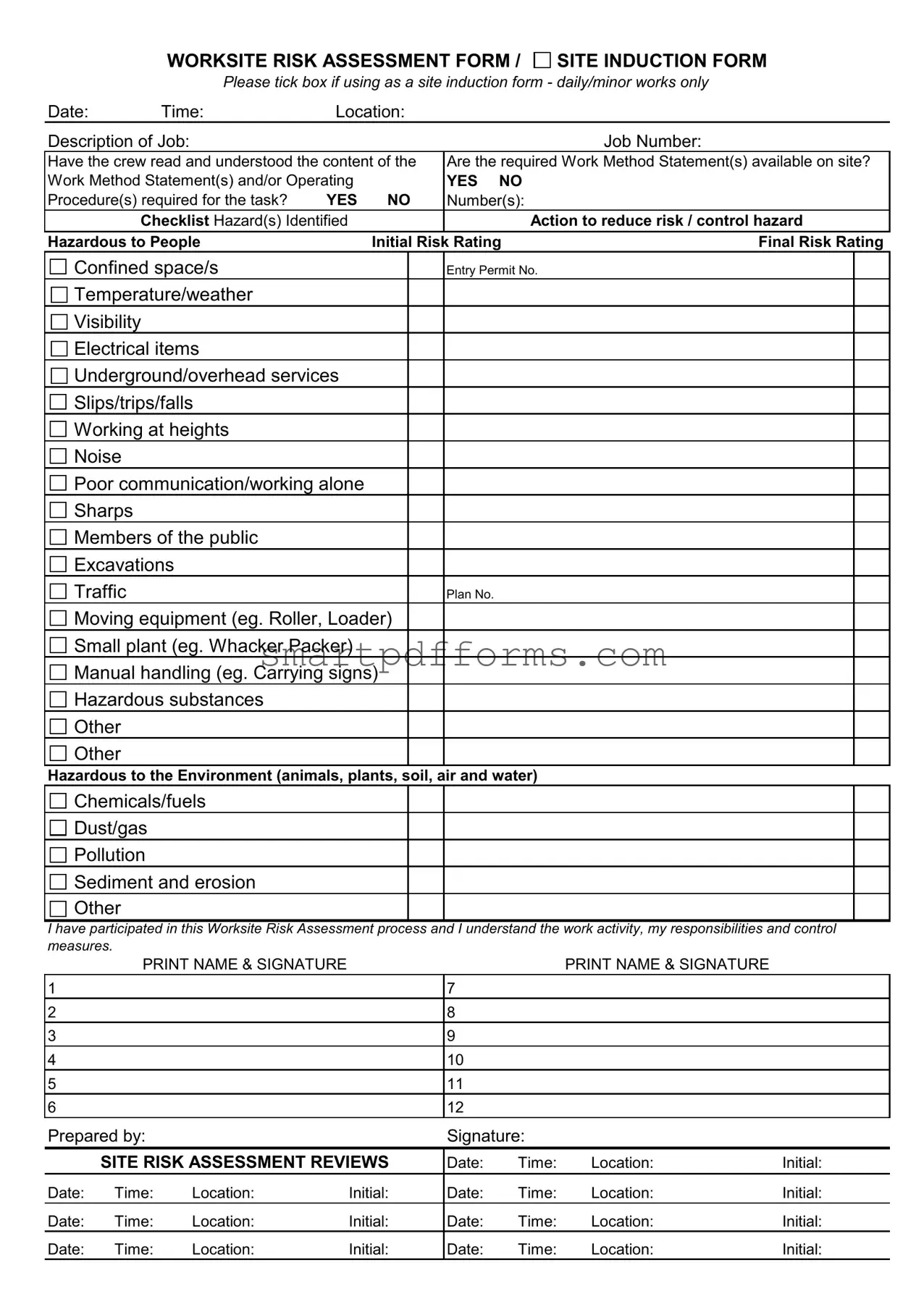What is the purpose of the Site Induction Sheet form?
The Site Induction Sheet form is designed to ensure that all personnel are made aware of the potential risks and hazards associated with a specific worksite. Its primary function is to facilitate a Worksite Risk Assessment process, guiding the identification, assessment, and control of hazards that could pose risks to people and the environment during daily or minor works. Additionally, the form serves as a confirmation that all crew members have been inducted, understand their responsibilities, and are aware of the measures in place to mitigate risks.
Who is required to fill out the Site Induction Sheet form?
Typically, the form should be filled out by the person responsible for overseeing safety at the worksite, such as a safety officer or site manager. However, it also requires active participation from all members of the crew working on the site. Each crew member is expected to read, understand, and acknowledge their understanding and responsibilities by providing their signature on the form.
How often should the Site Induction Sheet form be completed?
This form should be completed for each new worksite prior to the commencement of any work, especially if the nature of the work or the environment of the worksite changes. For ongoing daily or minor works, it is advisable to review and update the form regularly to reflect any new hazards or changes in risk assessments.
What kind of hazards should be identified on the Site Induction Sheet form?
The form is comprehensive and caters to a broad range of hazards that might be encountered on a worksite, including but not limited to: confined spaces, weather conditions, visibility issues, electrical hazards, slip or fall hazards, noise, poor communication or working conditions that necessitate lone work, sharps, interaction with the public, traffic, use of moving equipment and small plant machinery, manual handling tasks, exposure to hazardous substances, and environmental risks such as chemical spills or pollution.
Is it mandatory to identify controls for each hazard listed?
Yes, for every hazard identified on the Site Induction Sheet, it is mandatory to also outline specific actions or control measures to mitigate the risk associated with that hazard. This is a crucial step in the risk assessment process, ensuring that proactive steps are taken to protect both personnel and the environment.
What is meant by "Initial Risk Rating" and "Final Risk Rating"?
The "Initial Risk Rating" refers to the level of risk associated with a particular hazard before any control measures are implemented, essentially indicating the severity and likelihood of harm. The "Final Risk Rating" assesses the level of risk after control measures have been introduced, showing the effectiveness of the risk mitigation strategies.
Can the Site Induction Sheet form be used for major construction works?
While the form is primarily designed for daily or minor works, it can be adapted or serve as a preliminary tool for more significant construction projects. However, for major construction works, a more detailed and comprehensive risk assessment and induction process may be required, in accordance with local regulations and industry standards.
What happens if hazards are identified after work has commenced?
If new hazards are identified after work on the site has started, it is essential to halt the relevant work activities immediately. The form should then be updated to include the newly identified hazards, with appropriate control measures developed and implemented before resuming work. This ensures continual assessment and management of risks throughout the project duration.
Are signatures on the Site Induction Sheet form legally binding?
Yes, the signatures provided by the crew members and the person preparing the form are legally binding. They serve as evidence that all parties have participated in the risk assessment, understand the identified risks and control measures, and agree to adhere to the established safety protocols. This can have legal implications in the event of a workplace incident or audit.

